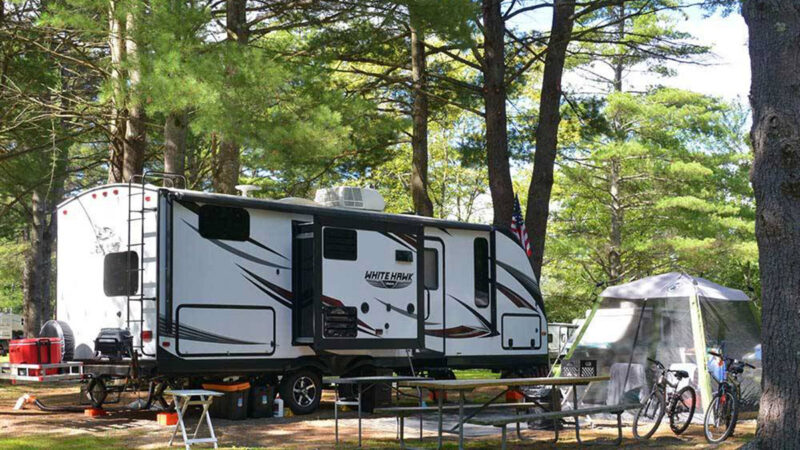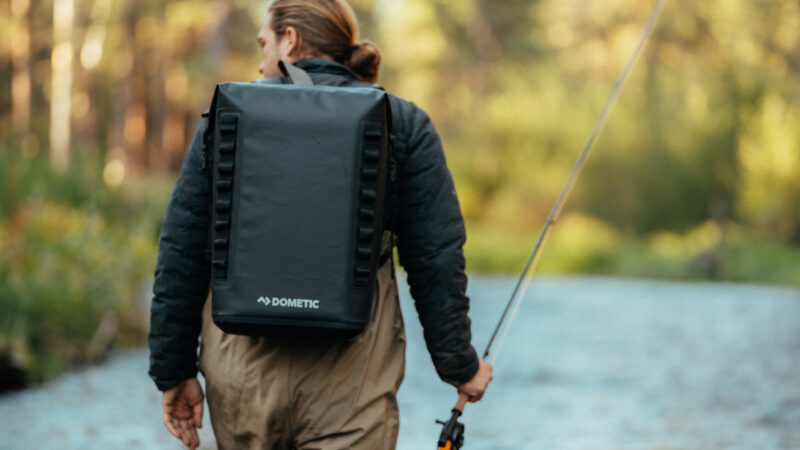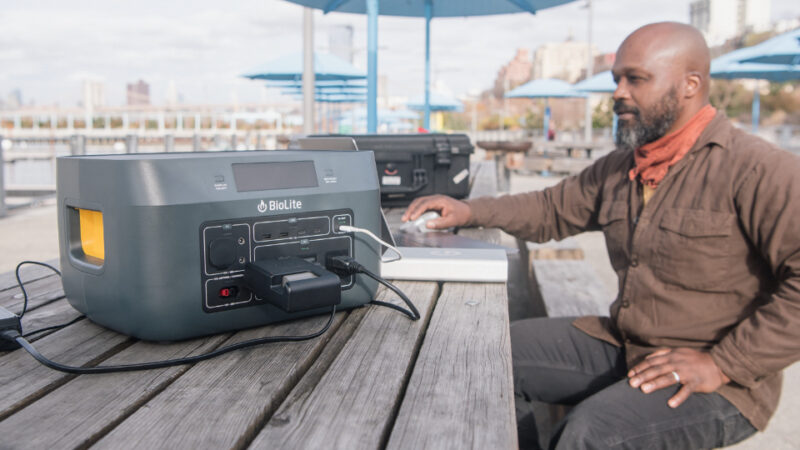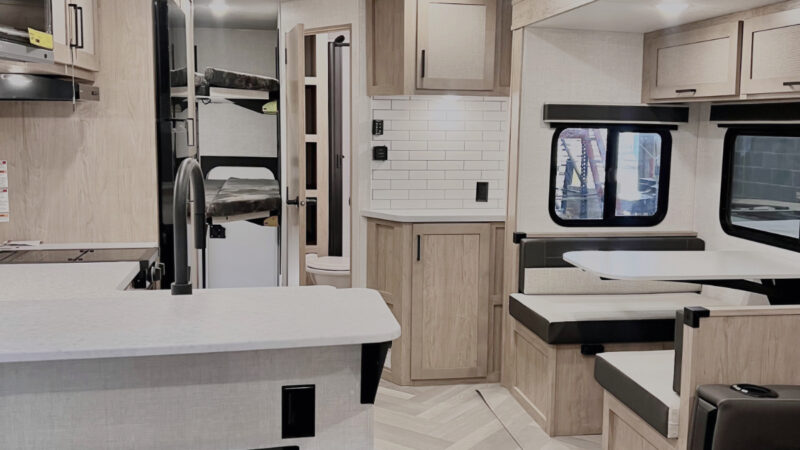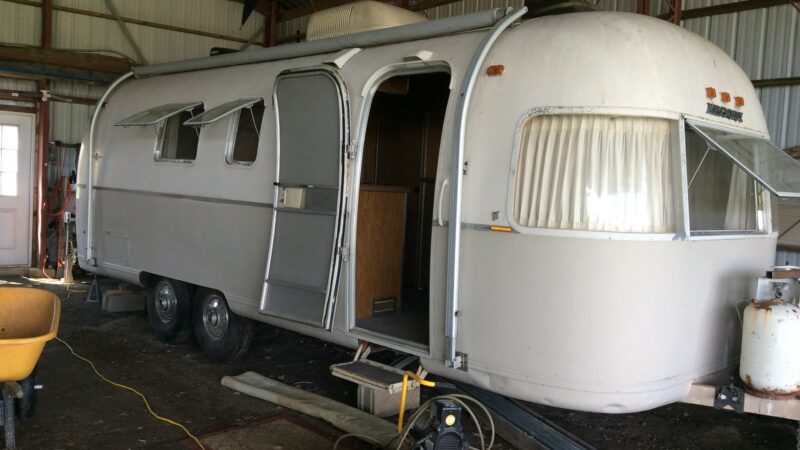Tech Q&A Tuesday: Surge Protector Woes, Troublesome A/C Units, and More
Surge Protector Pops!
Q: Thanks for all you do! I’m a long-time subscriber, but this is my first time writing in. I need your expertise. We own a 2013 KZ Durango Model D275RE. It’s a great rig, and we love the floorplan with grandkids sleeping over and mother-in-law on the dinette. My issue is that I haven’t ever used a surge protector, but I finally bought a Hughes power 30-amp Watchdog model PW30-EPO a year ago. We’d always stayed at Washington state parks and never had an issue with voltage spikes or anything.
Upon installing the Watchdog, it would shut down the system, giving me an “E1” over the current draw and requiring me to reset through the app. I fought with the surge protector and even got a screenshot of what the Watchdog was seeing. It showed 62 amps and 6,411 Watts of draw. Granted, I was running the refrigerator, hot water heater, and A/C at the same time, but adding all those up, I still don’t reach the numbers that the Watchdog said I was drawing!
Reaching out to Hughes, they really didn’t give me much information. It seems that the answer is to load the boat like you have an elephant with it going in first and then the rest of the load next. Totally didn’t make sense to me because the heater, fridge, and A/C cycle on and off. Who’s going to monitor the draw 24 hours a day?
So here I sit with a $300 useless item and no clear answer as to why it doesn’t work. I understand the life expectancy of A/C systems, and I’m planning to replace it (it’s over 10 years old), but I don’t want to fight this issue anymore. I sincerely thank you for your help. I’ve looked everywhere and can’t seem to find any explanation for this. Hoping to get some information on this unique issue.
—Sid Nix, Lynden, Washington
A: I believe that the surge protector reading is peak momentary ampere and watt draw, and yes, such a high reading is possible. You see, when the A/C comes on, it briefly draws roughly three times its running current as the motor starts. Add all the other draws to that, and you have a brief overload. I suspect you may also have a coffee pot or microwave in use, which draws a lot of amperage.
I suggest you obtain a clamp meter and run a test, measuring the current on your power cable to shore power. Run the appliances one at a time, noting their current draws. Then run them all together.
You can reduce current draw by using propane for the hot water, fridge, etc., and also install a SoftStart kit to the air conditioner, which will reduce draw considerably. Otherwise, you can risk running sans surge protector, or you may have to convert to 50-amp service, which could cost several thousand dollars.

Photo Credit: Mariakray/Getty
A/C Doesn’t Work at Highway Speeds
Q: We have a 2023 Thor ACE 32B that blows warmer air when the air conditioning is on while driving down the highway. At idle, 40-degree air comes out of the dash A/C vents, but when you are traveling at highway speeds, the air coming from the vents is 60 degrees. In addition, there is no difference when you switch the A/C to recirculate.
We have had the motorhome into Ford three times, as the RV dealer says it has no responsibility for the A/C unit. In a discussion most recently with the Ford dealer’s service manager, he explained it is a Ford A/C unit on the Ford F-53 chassis, but the evaporator portion of the system and ductwork is installed by Thor because its location varies for different coach designs. He also said the coach manufacturer normally stencils the refrigerant volume on the unit after they have installed the evaporator and refrigerant lines. This allows future technicians to fill the system with the correct amount of refrigerant based on where the evaporator is located. Our coach has no such marking, which doesn’t allow Ford to know the proper volume when servicing the A/C unit.
As of yet, no one has been able to resolve or identify and fix the issue. We believe there is something in the venting system that is allowing warm air to enter the venting system while driving down the road and thus raising the temperature of the air coming out of the vents because the A/C system works fine when parked and sitting idle. It has been a frustrating and warm summer as Thor, Ford, and the selling dealer all seem to want to blame the other party for the problem, and we are helplessly caught in the middle. Hopefully, you can help in resolving this issue.
—William Taylor, Findlay, Ohio
A: The fact that interconnected air conditioning components are installed by two different companies makes it a warranty nightmare, and you should contact Thor to have them help. The dashboard HVAC system uses one common housing to contain both the heater core and the air conditioning evaporator core. The heater hose from the engine water pump has a valve that controls the flow of hot water going through the heater core. When in AC mode, the water flow through the heater core should be completely shut off by this valve, but I suspect it isn’t. If the valve is partially open, it would allow hot engine coolant to flow through the heater core when engine RPMs are higher than idle.
When this happens, the heater core is heating the air and the evaporator core is cooling the air at the same time. This can result in warmer air coming from the vents. The heater control valve should be located up high under the hood on the passenger side. Follow the heater hoses from the engine toward the firewall, and you will find it. Temporarily place pinch clamps (in such a way that nothing is damaged) on the heater hoses to stop the flow of hot water. Test drive the coach, and I’m quite sure the problem will be gone.
There is also a blend door that’s vacuum operated, and if there is a small vacuum leak anywhere in the HVAC system, the flap will default to the defrost position instead of the dash vents. At idle there is more engine vacuum than under load while driving, so the flap may change position under load. See if that is happening. A vacuum gauge can be used to measure the vacuum at idle and under load. Shops can use smoke-generating machines to pressurize vacuum control systems and find leaks.
Monitoring Batteries
Q: After my Winnebago Minnie drained the batteries while dry camping, I pulled fuses and measured amps across their terminals to determine what was going on. (There were a number of current draws.) I then bought a generator to provide 120 Volts AC and keep the batteries charged. Eventually, I installed a Victron Shunt that allows me to monitor current going in and out of the battery, charge status level, and battery voltage. My current Sonic 211VRB trailer has a standing draw of 0.2-0.3 Amps. The radio standby is only 0.08 amps, so not much. Other items include the 12V fridge electronics and CO/LP detector, which combine to draw down the batteries. New RVs just seem to have constant draws, which makes a solar panel very useful to keep the batteries charged.
—Mike Heisler, Lansing, NY
A: Thanks for the tip, Mike! We hear about a lot of battery and charging problems, and your comment can help some folks. Victron battery monitors allow RVers to closely monitor charging inputs and power draws, and there’s even a phone app available to view what’s going on. It’s important with lead-acid batteries to stay above a 50% discharge level.
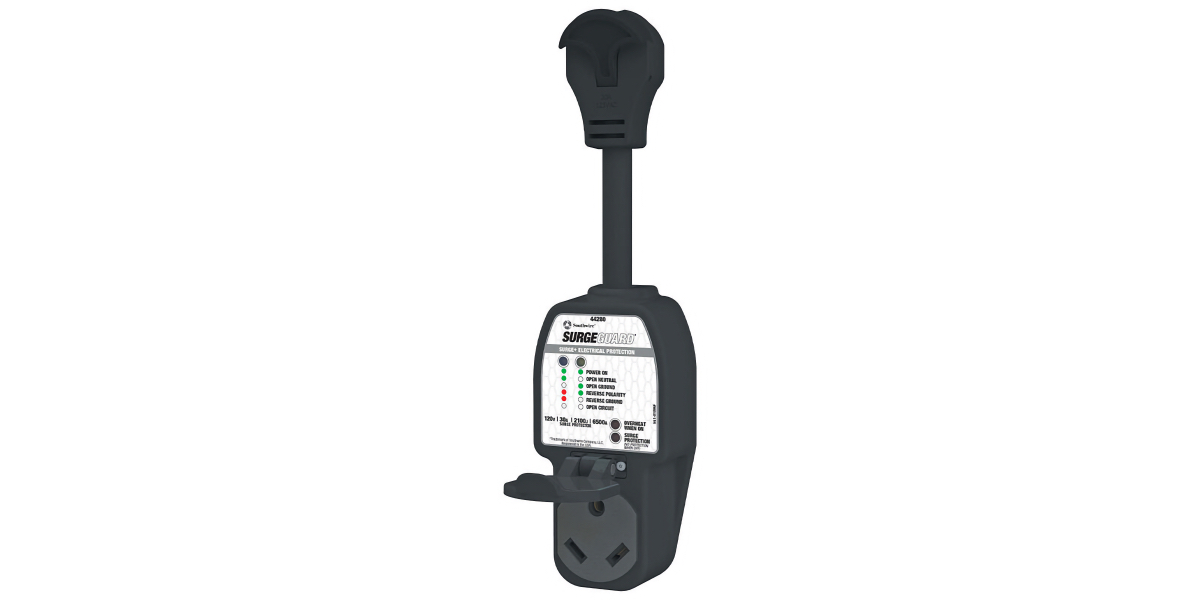
Photo Credit: Southwire
Double Surge Protector
Q: We have a 2023 Newmar Ventana 3709 with an onboard surge protector. I recently noticed a friend with a Newmar Dutchstar (which also has an onboard surge protector) also plugged into shore power with a surge protector at the pedestal. He states he would rather have the pedestal surge protector get ruined by a surge than the more expensive onboard. Is he being smart or overly cautious? Can the addition of the pedestal surge protector harm the onboard unit or vice versa Enjoy your tech articles; keep it up.
—Wayne Klamik, South Milwaukee, Wisconsin
A: I think it’s being overly cautious. A normal surge or voltage spike is not going to permanently damage a quality surge protector. Just reset and go. The only time there’s a good chance of destroying the surge protector is if there is a nearby lightning strike. If it is a strong enough bolt, it would probably destroy both units anyway.
Musty A/C Unit
Q: We have a 2020 Grand Design Imagine 2600RB trailer. This was our first year at a seasonal RV site in Michigan. We hardly needed our A/C unit all summer, but would run it while we were away for short periods of time to keep the temperature and humidity down. The last few times we turned on the A/C unit, it would have a musty smell when it first came on. The outside unit was checked and cleaned, and the inside filters were cleaned. Our unit is a Coleman. Any suggestions on what to do to remedy this? I’m sure other readers have had similar experiences. We have enjoyed your columns for many years. Keep up the good work!
—Sheryl & Joe Frohnhofer, Woodhaven, MI
A: You live in a humid area, as do many people in this country. Condensed moisture on the internal evaporator coils, combined with dust particles, forms a place for bacteria, mold, and fungi to grow. One way to prevent the build-up is to operate the air conditioner on its “fan only” setting for a few minutes after every use before it’s shut off. This will dry the moisture on the evaporator fins, preventing the problem.
Check the air conditioner condensation drain to make sure it’s not clogged and retaining water. Because the air filter has been cleaned already, just temporarily remove it for this next step. Operate the unit on fan only and spray some Lysol into the air intake. If you want a stronger solution, try Nextzett Klima Cleaner Pro, which is designed for cleaning evaporator cores and has a long tube to reach inside. Here’s a YouTube video on how to do it.
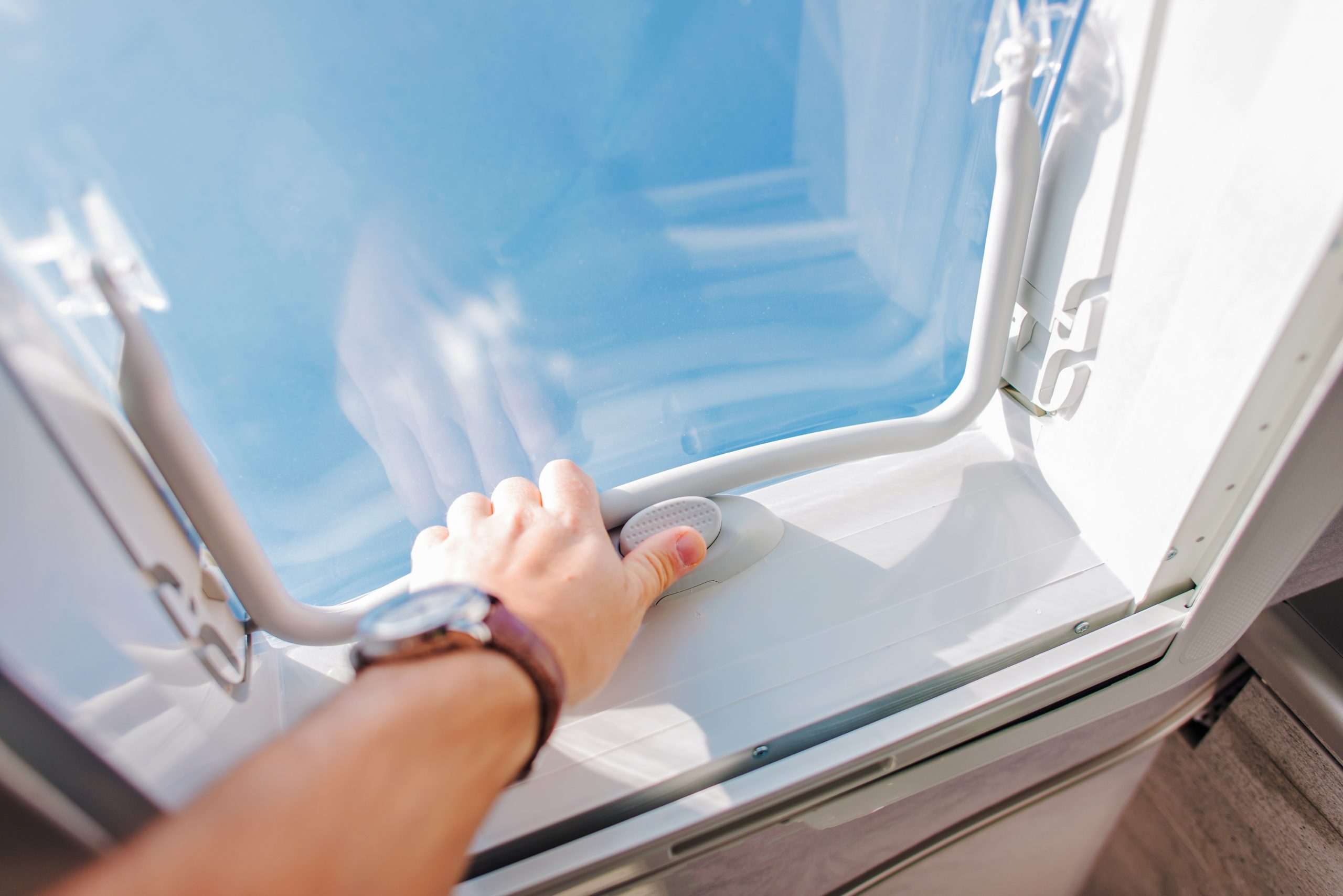
Image: Shutterstock
RV Window Repair
Q: We have a 2016 Holiday Rambler Navigator XE 34-foot motorhome. The seal between the layers of glass broke on both of our double-pane windows within the first couple of years. I never understood why the manufacturers would utilize this type of window in a motorhome. I discussed my concerns with a recommended glass company, and as a result, both of my side windows have been replaced with single-pane safety glass.
—Glen Barras, Charlotte, North Carolina
A: That modification is fine from a cost and safety standpoint. If you only use your RV in mild weather, you probably won’t notice a difference. However, the double-glazed glass does offer noticeably better insulation properties for cold or hot weather, and may reduce inside condensation on the glass.
Ask Us Anything
Questions about your road trip ride? Write us at [email protected]. Visit rv.com for more on RV gear and maintenance.
The post Tech Q&A Tuesday: Surge Protector Woes, Troublesome A/C Units, and More appeared first on RV.com.

